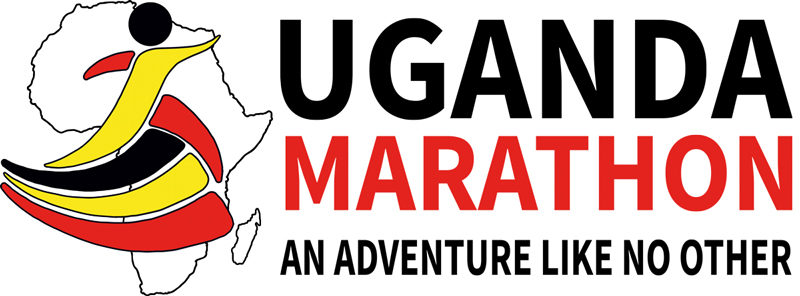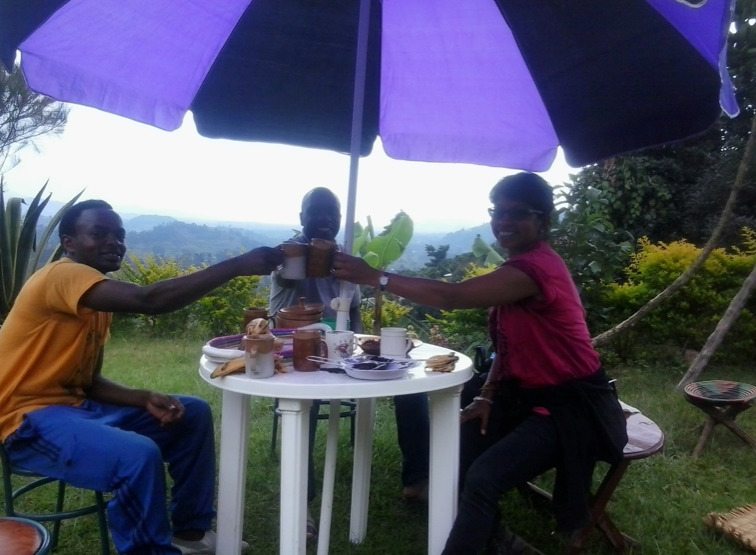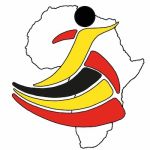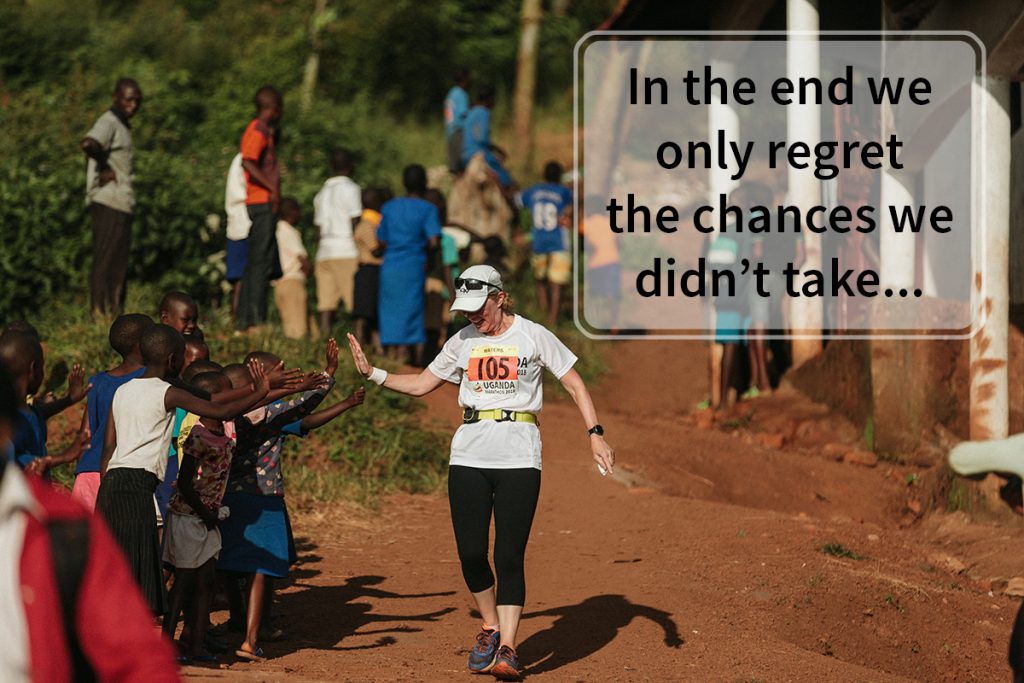The runners make the Uganda Marathon what it is. The friendships, the community, the fundraising and the determination to finish are why UGM is truly a Race Like No Other. We want to tell the stories of the runners who take part in the Uganda Marathon, because it’s their stories that are most exciting!
Manisha signed up for the first Uganda Marathon in 2015. She ran the full marathon course, which was her first-ever marathon. Afterwards, she embarked an adventure exploring Uganda. With lots of photos included, here’s her story…
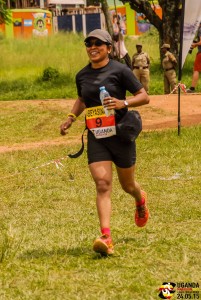
What made you sign up for the Uganda Marathon?
I signed up because of a restless feeling, a call to act by the spirit within. Feelings of nostalgia, creation, and survival, highlighted a need for replenishment from the source. To see the connections that holds us all together. To let go of my comforts and to refresh a sense of my autonomy.
I had never run a marathon before and I wouldn’t say I’m a ‘natural’ runner. However, I have been running for years and had a half marathon under my belt when I signed up.
The chance to get an early bird ticket and hearing stories at the Escape the City event, further stimulated my interest. The stories from the event were all about life changing adventures and great feats of endurance in a difficult environment. They contained hardship, challenge, doubt and uncertainty, but they were also about facing the unknown, pushing the sides of the box, crossing barriers and honesty- all that appealed to my sense of what’s really important.
I also liked the grassroots ethos behind the idea of the marathon. That the money I raised would go straight to helping the community.
Was it what you expected?
In a way yes.
When I started fundraising before I left, people looked at me in disbelief that I would run in such heat. It actually wasn’t that hot. I was looking forward to running through villages, feeling tired yet inspired.
Nothing can prepare you for a marathon really, no matter where you are. It’s a personal experience and every day of training is different. However, near the camp, we did a number of early morning runs before the marathon to acclimatise to the altitude. I wasn’t too worried about timing though, as it is easy to give yourself a hard time over breaking records. I just wanted to enjoy the experience, so I took my time, and stayed as present as possible, concentrating on deep breathing and made sure I was properly hydrated throughout. Saying that, the route was a challenge, with very steep hills.
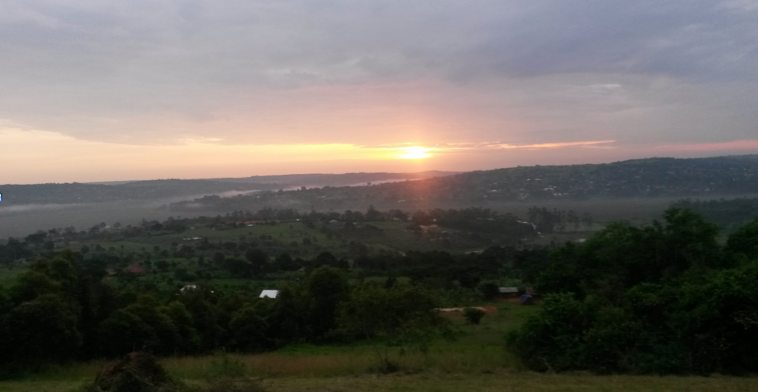
Which projects did you choose to fundraise for? Tell us about why you chose this project(s) and your experience with them in Uganda
I chose to split my donations between Kitoru Mobile, Knowledge for Children and WAR CHILD. However at the last minute, I chose not to visit these projects, as I felt assured that the money would be well spent. I chose to visit a different school. I went to Bugibira school to help build a chicken coop, thinking it would be an easy and quick job. I also wanted to be able to replicate the coop at home.
Naturally I had underestimated the task. It turned out to be a huge project that we had to start from scratch. We measured the plot of land and started digging. Eventually it was time for a break and the next part of the session. This involved carrying hundreds of bricks from a heap of thousands, up a steep hill, to be used for walls. We spent 4-5 hours carrying bricks up the hill, but did stop for lunch that included a Ugandan specialty- a Rolex. The bricks were double the width of UK ones and with nothing to carry them but our hands, it was hard work. It was a pretty good upper body workout though. Eventually a system started with a chain of people passing bricks to one another, helping the process along. Enterprising children also made sledges out of plastic bottles to put bricks on, so we could pull them up the hill.
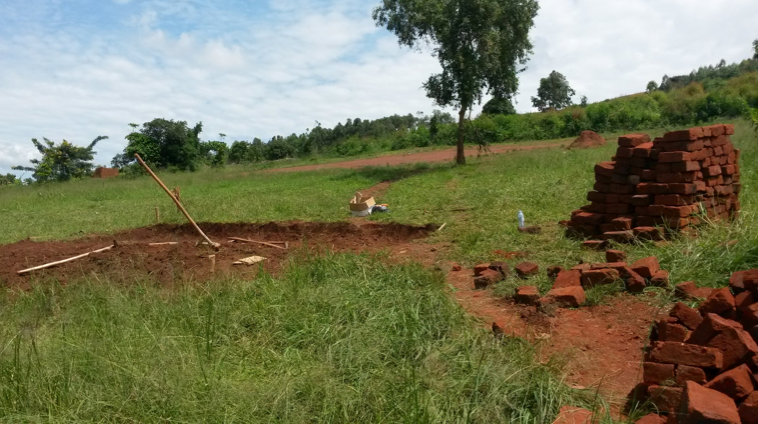
That day we only managed to start the project, but I have seen photos of the completed coop since, and have been told the chickens are very happy!
Visiting this school showed me where the fundraising money goes – it goes straight to the projects. It goes to building new dormitories so children can go to school and it pays teacher’s salaries. By investing in education, it cements the idea that this is a country that is rising and the population is being empowered through education. There are signs local businesses are growing here too, and there is potential for the future.
After the 6-day event, you went on to experience other parts of Uganda. Tell us about what you did and how you enjoyed it.
On Monday, the day after the race, I was met by Asgario and Alex from Nkuringo Tours. They were recommended by a friend who had travelled with them before. Their smiles, knowledge and professionalism made me feel at ease, particularly as a solo traveller. Asgario is a keen birdwatcher, wildlife expert and entrepreneur, so it was good to hear his stories and to learn about Uganda and its wildlife. Infact, he always carried a big red book of birds, which some students mistook for a bible!
I believe that when we learn about the wild world, it leads us to explore the connections of living together on one earth. This understanding of who we are and the future of the planet is crucial. It informs us, so we can make better decisions. Nature is the thread that connects the dots and ultimately links us to our source.
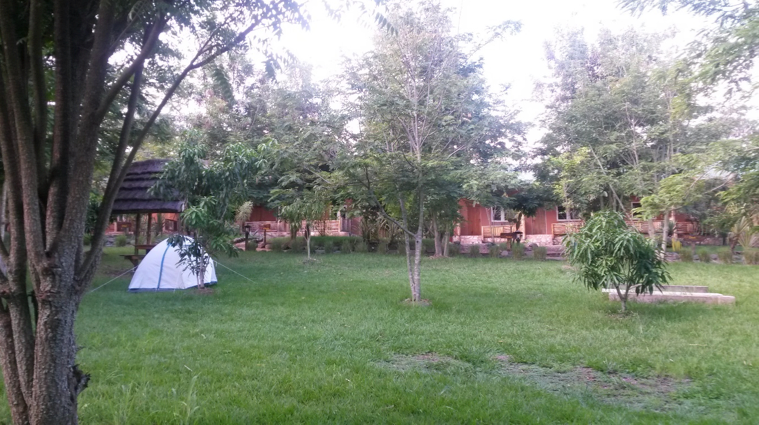
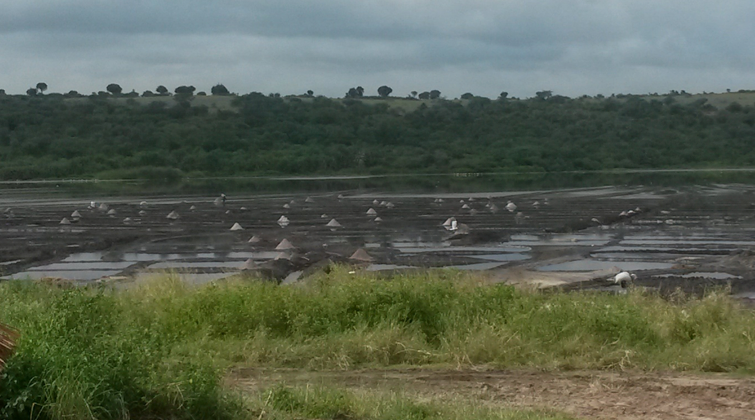
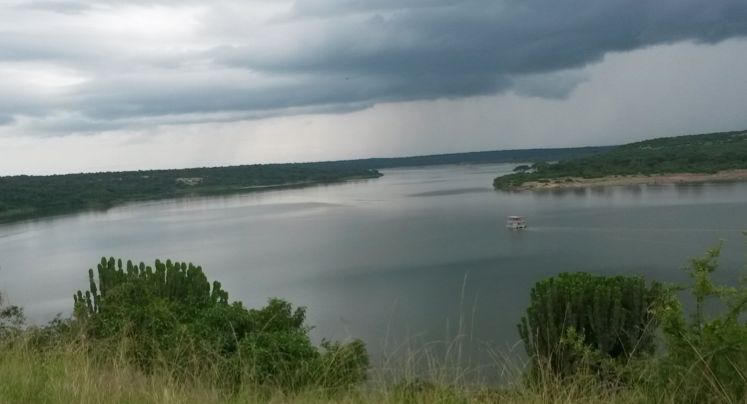
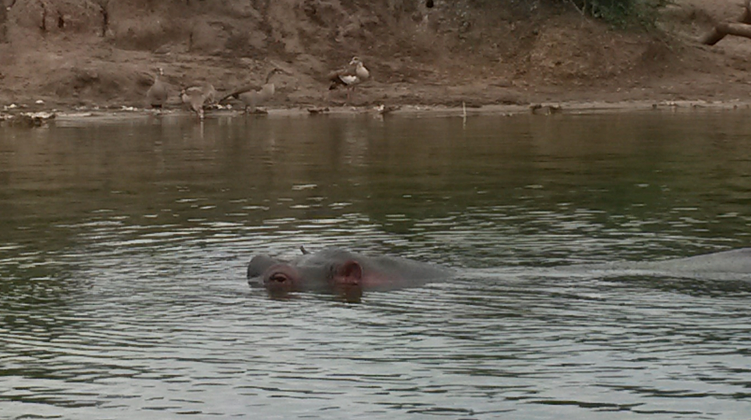
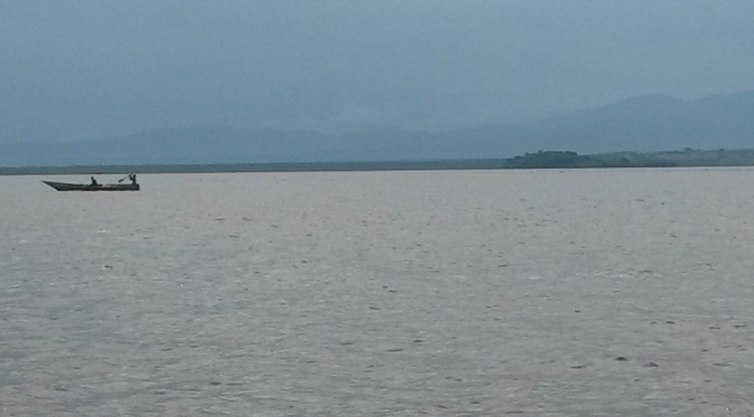
At Queen Elizabeth National Park, I was lucky enough to see two leopards, but they disappeared in a blur of spots and swishing tails before I could take a picture. The highlight of the safari was seeing a family of lions reclining in a fig tree. You are not allowed to go off the track though- if you do, the park rangers will fine you $150. I managed to take a picture of this lion before leaving the park.
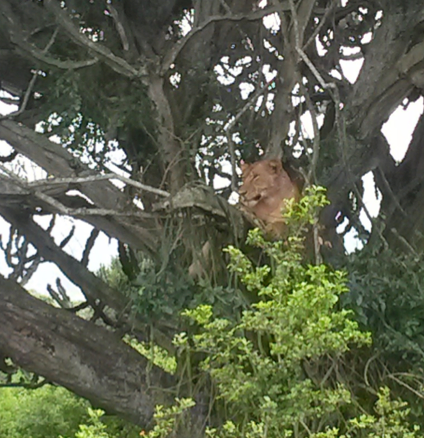
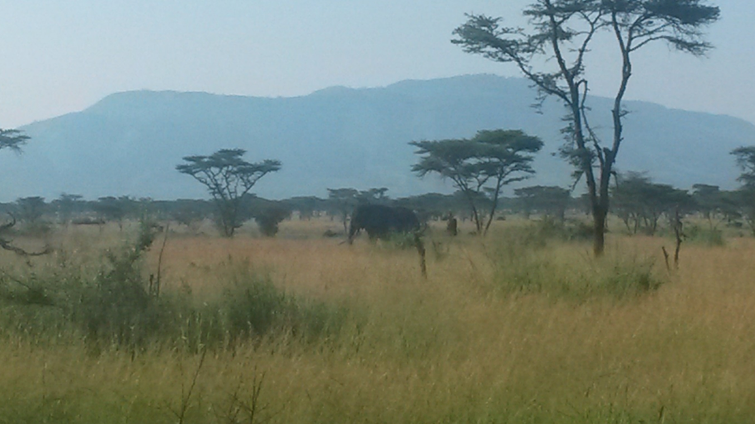
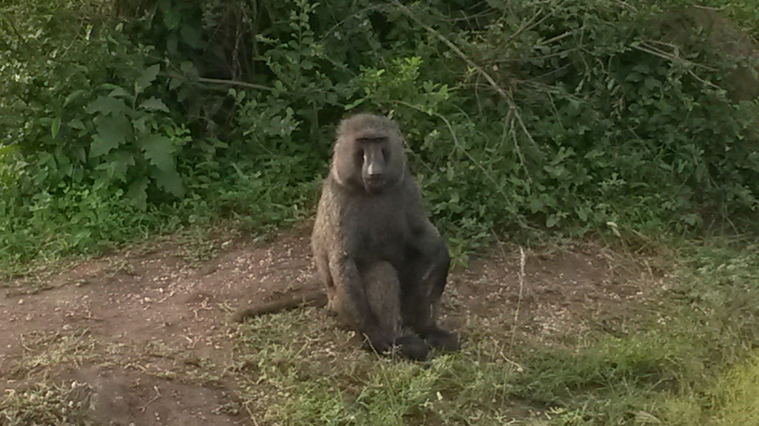
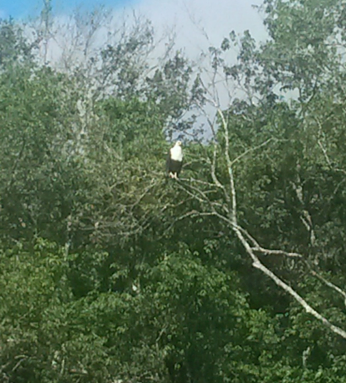
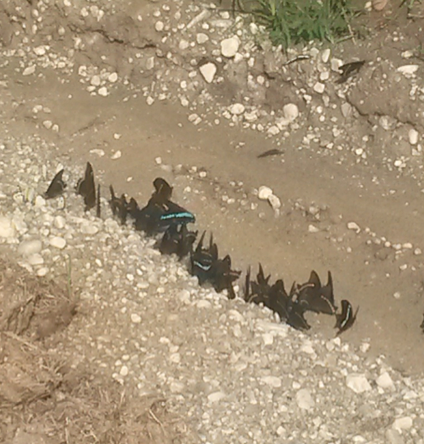
On Wednesday we arrived in Buhoma, in a rainstorm as darkness descended. It was too wet for me to pitch a tent, so I stayed in a lodge which was roomy and comfortable. Aptly the hut was called Gorilla, as the forest is home to a number of mountain gorilla families. If you have enough money, I hear the trip out to see them is worth it. Asgario said that he had seen gorillas very close on this site before, so I did wonder if I’d be lucky enough to see one and add it to my increasing list of amazing wild animals.
I recommend taking a wind up torch to navigate the steps down to the shower, if you are up before daylight though! I was too excited to sleep in anticipation for the day ahead.
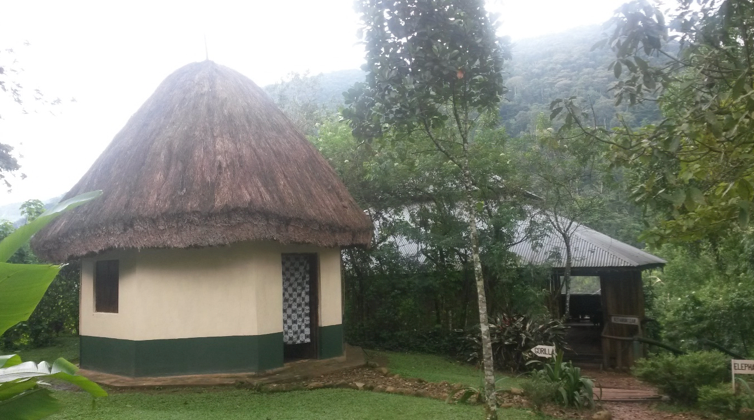
The 18km hike the next day, started after a wholesome breakfast in the restaurant. Accompanied by a park ranger and a police officer, both with rifles, Asgario and I set off into the rainforest. This fertile land is home to a myriad of species including giant palm trees, Impatience flowers, Fig trees, Mahogany trees, Cordia flowers and Myrianthas fruit. This fruit is eaten by monkeys and humans. Unfortunately I didn’t see any gorillas, but I did see red tail monkeys and blue tail monkeys high in the tree tops using their tails to climb amongst the canopy.
After the marathon I would say this seemed a harder challenge, only because it is all up hill and there are a lot of thick tree roots which means you have to watch your step. The entire forest vibrated with life. The smell of wet vegetation was rich and earthy, and the spray from the waterfalls refreshing.
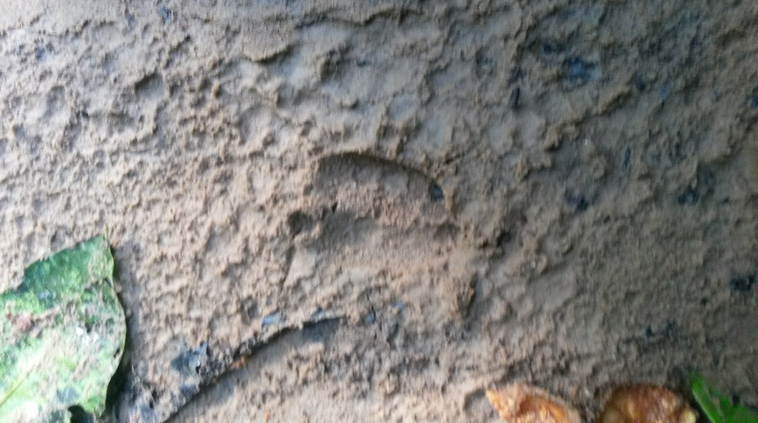
If you are ever in the rainforest and you smell something like rotting eggs though, beware, it means a snake is nearby shedding its skin!
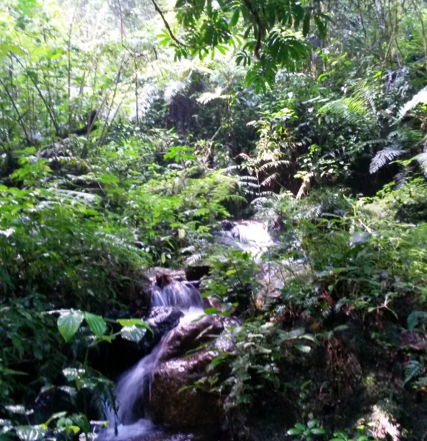
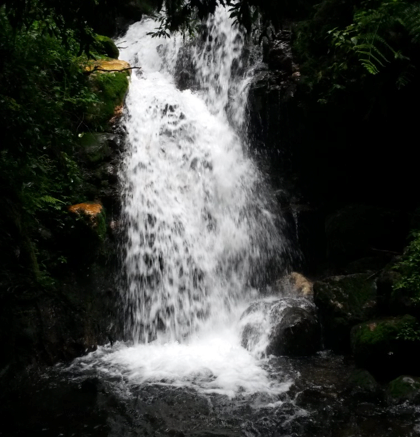
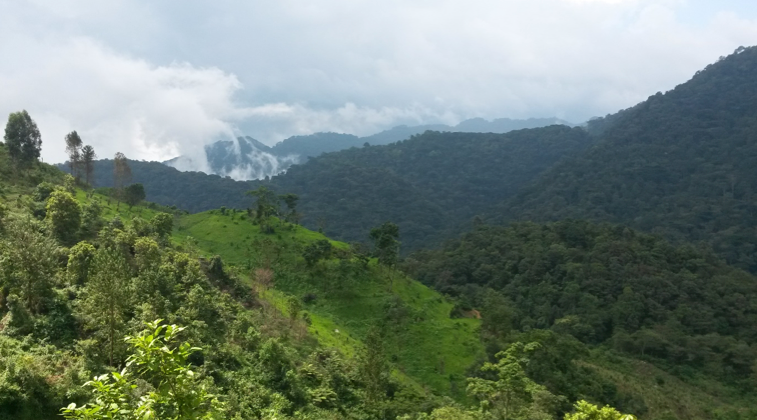
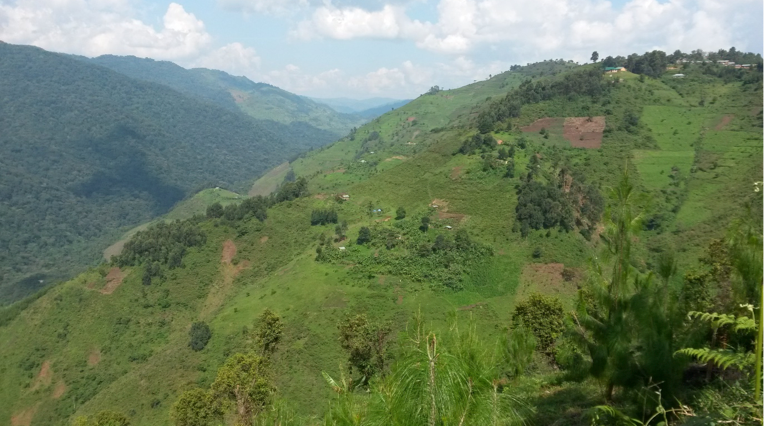
I stayed with Asgario and his family for 2 nights at their homestay in Nukringo, where I was looked after very well with delicious 3 course meals and a comfortable bed. Here I learned more about family life in Uganda.
Asgario even showed me the house he had been born in and told me how he had always lived in the same place. His home is half way up a mountain and there are houses within the complex for his extended family. When you stand on the cool concrete in the back garden you can see the high tops of the mountains of Rwanda and the Congo, as you breathe in clean mountain air.
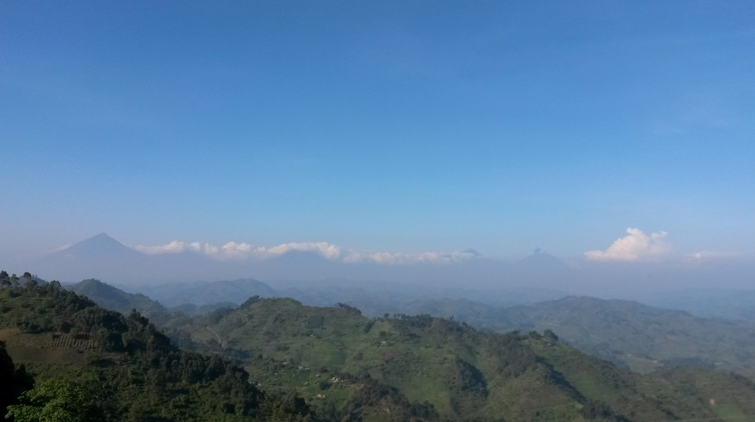
His children were shy at first, but curious and playful. His daughter loves to sing, which I think must feel like running with its shared sense of freedom. I think if I lived on a mountain, it would inspire me to sing!
I enjoyed the simplicity of their life and also the family’s entrepreneurial spirit. Asgario showed me where they had started the foundations for the hotel he was building. It made me think how important it is to honour what you do have, to keep dreaming and to keep striving for a better future, whilst protecting life in all its richness and glory.
I even got to hold my first chameleon in their front garden, and it changed colour!
I visited the school that Asgario set up and listened to the children singing in evening assembly. I was given a tour of the school and met Year 9’s and 10’s. The children showed me their hand made wooden pig pen, which already had a pregnant sow and hog inside. I’ve heard since the piglets are keeping everyone occupied, and that there are even more to follow.
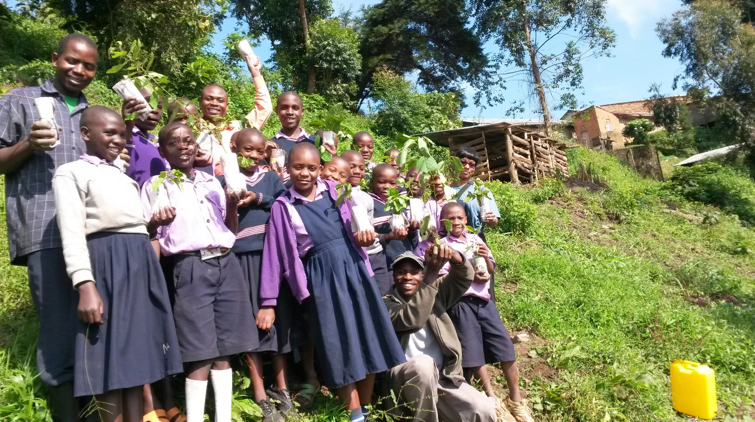
The vast vegetable garden at the back of the school made me think of home and the number of distractions like televisions and iPads that distract us from reaching our full potentials. And as much as I am aware of the reality of a developing nation, even in Uganda the need for a mobile phone is high (everyone has one), but it hasn’t replaced other essential skills like growing food and keeping animals.
I wanted to meet the indigenous people of Uganda, so Asgario arranged for me to meet the Batwa people. The group that came to meet me were great, and a lady called Irene showed me what plants they use for medicine, and how they make shelter and tools.
I could get a deep sense of their knowledge of the land and their relationship with the forest, and how it was necessary to observe and be in tune with living with the land. They showed me their ceremonies and told me stories about life in the forest.
They even let me have a go on a handmade bow to shoot my first arrow!
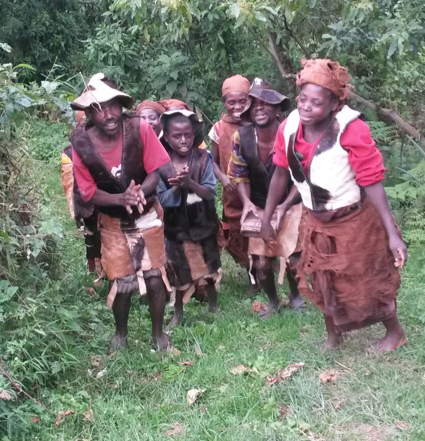
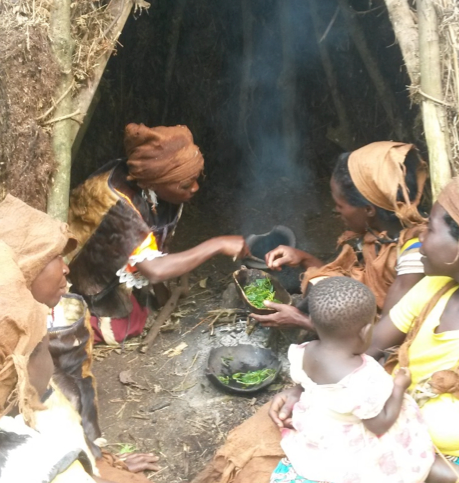
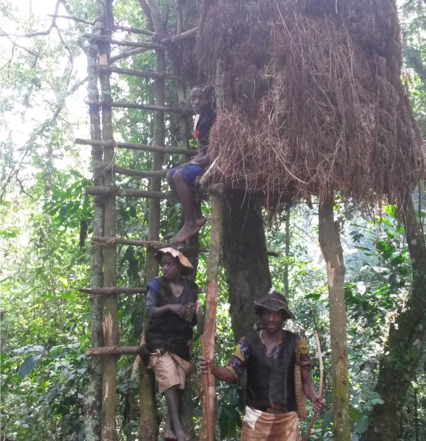
After leaving Nkuringo, Asgario, Alex and me made our precarious way back to lower ground. Winding down the mountain, we passed girls carrying heavy jerry cans of water on their heads, women carrying rolled up mattresses on their heads, shepherds herding short haired sheep and goats. Heavy goods vehicles hurtled passed too, billowing out black smoke.
Eventually, we reached Lake Mutunda in Buyomi.
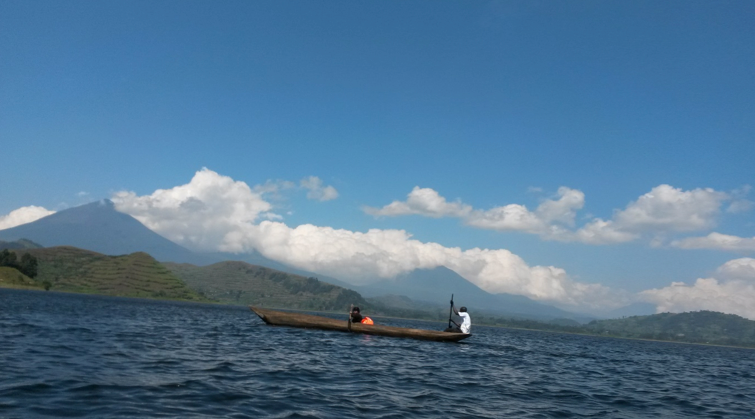
Lake Mutunda is a lava damned lake, again teeming with wildlife. Its mountainous areas are cleared for crops. The only way across the lake is by dugout canoe, which is made from a softwood and takes 3 months to build. The oar was heavy to use, but I had some help with steering the canoe, due to the oarman at the back who deftly cleaved the waves. Here, apart from the various birds you can see and hear, is the prime location for otter spotting.
It was great to see the curious lutrines pop their heads above the water, look at us, and then dive back down into the cold water. Seeing animals in the wild sets alight a sense of joy in me and really drives home the value of nature, which we need to survive.
After the 2 hour canoe ride, Asgario and I started the long ascent up along shimmery pink volcanic stone to Mt. Muhavura, to meet Patrick and his family who are coffee farmers. The wildlife changed here, and instead of heavy migratory birds as seen in the low lands, this land is home to sparkly green-headed Sun Birds and cinnamon chested Bee-eaters.
I was struck by the humility of Patrick and his family, whose plantation has been in the family for years. They kindly showed me the entire cycle of coffee farming, from growing the beans, to finally enjoying a cuppa.
I learnt there were 3 different ways to strain coffee. Naturally I couldn’t wait to take some back home with me.
If you’d like to know more about the Nukringo Tours, check out their website by clicking here. You can also contact Asgario directly via email: asgarioyo@hotmail.com. He does tours of Rowanda aswell!
What was your overall best memory of the Uganda Marathon and also how would you sum it up for someone who hasn’t been.
I enjoyed meeting the locals and hearing their stories and dreams. Meeting a thriving and conceptual art group including Colin and Carson (who I am still in touch with!) at Ndegeya camp (the athlete’s village) inspired me with their stories. I enjoyed the long walks away from camp and back again, watching the landscape change from light to dark.
It’s really hard to choose a best memory, as all of them were equally brilliant.
But if I had to choose one, it would have to be working with the bright and talented kids from the Masaka Rehabilitation Vocational Centre. Here kids with disabilities are taught skills in knitting, leather making and carpentry. I made a ‘key holder’ from scratch with them! Getting it right took patience and considerable skill.
I would encourage anyone who isn’t sure about taking part in the Uganda Marathon, to just do it. Go with your gut, keep your mind open and make for adventure. You will love it.
Want to read more?
